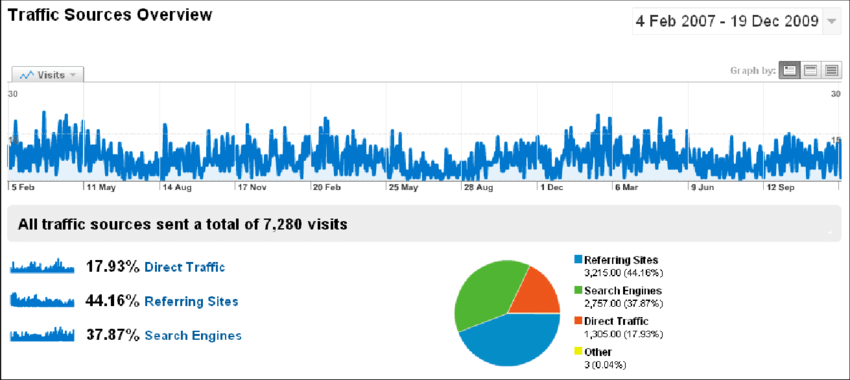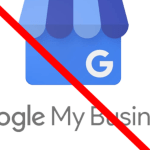
Digital marketing metrics are crucial to your campaigns’ success.
After all, your key metrics give you insights into your digital marketing campaigns’ performance and help you understand the strategies that work (or don’t work) well.
Tracking your metrics also helps you make better marketing decisions to meet your objectives. Tracking and analyzing your metrics is essential to optimizing your website and campaigns.
If you don’t track your performance, you will suffer uncertainty and increase your risks. Here are 8 of the most crucial metrics you should be tracking.
1. Traffic Data
Traffic data is one of the most basic yet crucial metrics for measuring your website or marketing campaign’s effectiveness.
The data can answer questions such as: How many people visit my website? What pages are they viewing? Which keywords do they search for?

Traffic data gives you an idea of how much traffic your website gets from search engines, social media, and other sources.
If you’re not getting enough traffic, check crucial aspects such as your website’s design, ad copy, and other marketing content and initiatives.
It’s essential to remember that traffic data doesn’t solely determine the success of your marketing campaigns.
It is best to pair this metric with the other crucial metrics to determine how well your campaign performs.
2. Conversion Rate
Conversion rate is the percentage of visitors who complete an action you want them to take on your website. It’s usually expressed as a percentage of the total number of people who visit the page.
For example, suppose you sell test case management software; if 100 people visited your website and five subscribed to your service, your conversion rate would be 5%.
The conversion rate is significant because it tells you how well your website or campaign helps turn your passive visitors into paying customers.
It helps you determine where to improve, including which pages are performing well and which ones need attention.
3. Customer Lifetime Value (CLTV)
Customer Lifetime Value (CLTV) is the total amount of money you expect to make off a customer throughout their relationship with your business.
The CLTV formula is simple: CLTV = Average Customer Value(How much they spend) x Average Customer Lifespan (How long they stay).
Calculating the CLTV can give you a good sense of the cost to acquire a new customer based on their lifetime value.
Use CLTV and other metrics to help you decide how much and where to spend your marketing efforts to drive significant results.
For example, if you know that each new customer costs $300, but they only make $200 in revenue, it might be time to rethink your marketing strategy or adjust your pricing model.
4. Return on Ad Spend (ROAS)
Return on Ad Spend (ROAS) is the amount of revenue earned per dollar spent on advertising.
Calculate your ROAS by dividing the total revenue generated by the campaign by the total cost of running it. The formula is: Revenue / Total Adspend.
For example, if you spent $1,000 on advertising a worship presentation software for pastors and made $10,000 in revenue, your ROAS would be the ratio of 10:1 or 10.
The higher your ROAS, the more profitable your advertising campaign. The lower it is, the less effective your campaign is at driving sales.
5. Cost Per Acquisition (CPA)
Cost Per Acquisition (CPA) is the cost of acquiring a new customer.
Calculate your CPA by dividing your total sales revenue by the number of customers acquired in a given period (Total Amount Spent / Total Conversions).
Your CPA is an essential metric for measuring your marketing strategy’s effectiveness because it tells you how much you spend on each customer.
If this number is too high compared to each customer’s value, you need to try a different marketing approach since lose money for every customer acquired.
6. Average Session Duration

Average Session Duration is a metric that measures how long visitors stay on your website.
Suppose you have a blog about the content tracking process, this metric is able to tell you how engaged your visitors are with your content.
Calculate the average session duration by dividing the total number of visits in a month by the average session length.
For example, if a site has 100 visits in one month and an average session length of 20 minutes, then the website’s average session duration would be 100 divided by 20 = 5 minutes.
Use this metric to ensure that your content is compelling enough to keep visitors reading or that there are no problems with your site’s design.
7. Average Page Load Time
Average Page Load Time is the average time it takes for a webpage to load.
Visitors are going to click away in frustration if your web page takes too long to load, increasing your bounce rate..
Your average page load time should be less than five seconds, according to Google.
Optimize your images and compress code to help speed up your page load times.
Find this metric in Google Analytics under Behavior > Site Speed > Performance.
Alternatively, you can use other online tools such as Google’s PageSpeed Insights or GTMetrix.
8. Engagement Rate

Engagement Rate measures how often your audience interacts with your content.
It’s also the percentage of impressions that result in a user taking action, such as clicking on an ad or making a purchase.
It is the number of people interacting with your content divided by the total number of people who saw it (Total Engagement / Total Impressions).
For example, if you have 10,000 views on your latest blog post on why you should buy SEO articles and 1,000 people clicked through to read it, your engagement rate would be 10%.
This is a good engagement rate as the higher the engagement rate, the more frequently users interact with your content.
Track your metrics to stay on top of your campaigns
There is no perfect formula to achieving digital marketing success, but you can get closer to your goal by tracking the right metrics and optimizing your campaigns accordingly.
While there is a plethora of marketing metrics you can track, focus on those that matter most to your business and are crucial for any successful digital marketing campaign.







